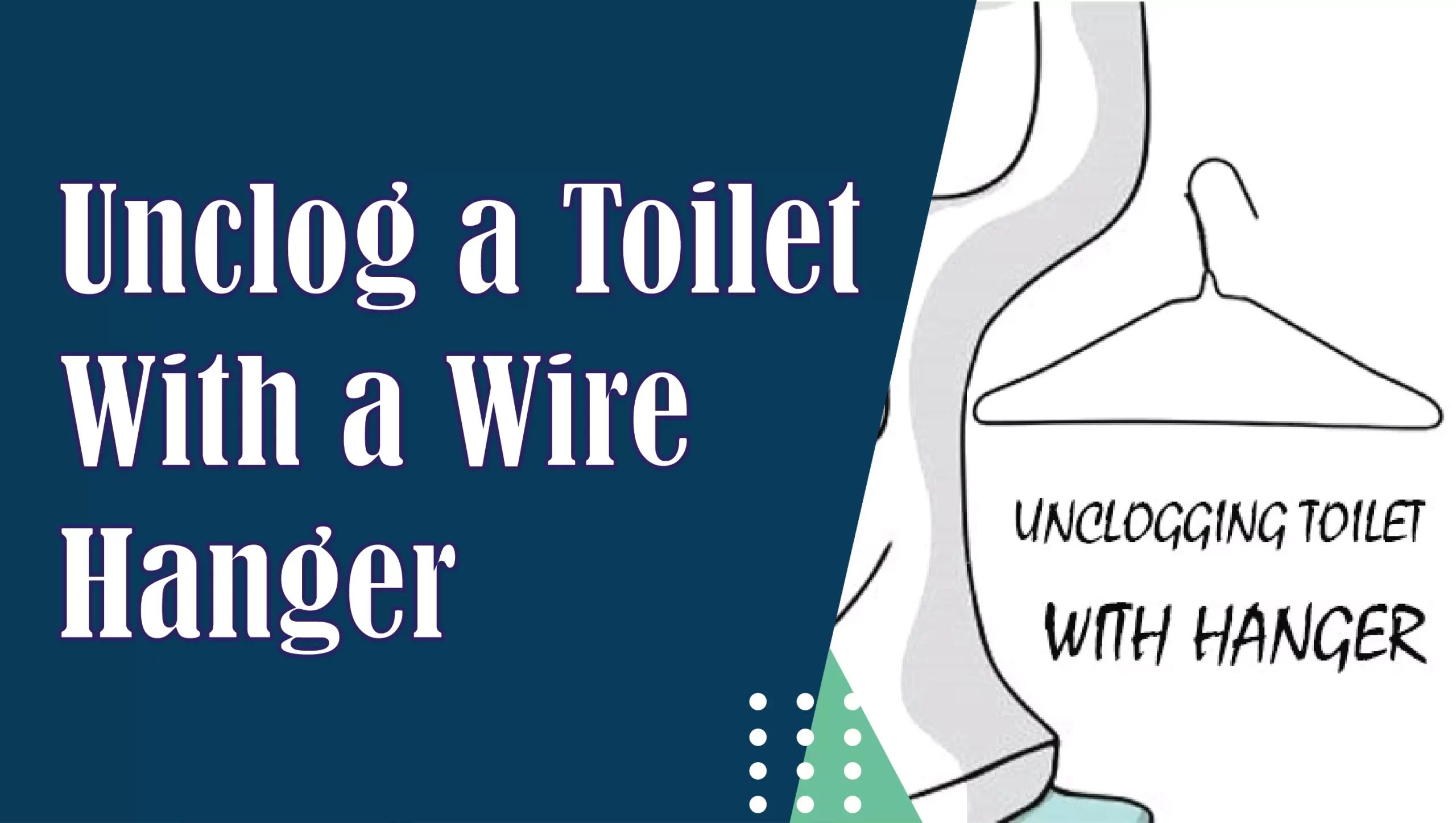Can You Unclog a Toilet with a Wire Hanger? A Comprehensive Guide

Dealing with a clogged toilet is undoubtedly one of life’s more unpleasant challenges. It’s a situation that can leave you feeling frustrated and uncertain about what to do next.
Amidst the desperation, you might have heard whispers of an unconventional solution: using a wire hanger to unclog the toilet. But does this method really work? In this detailed blog post, we’ll explore every angle of this approach.
We’ll take you through the step-by-step process, discuss the tools required, address common toilet-related issues, and even compare this method with alternatives.
So, let’s dive in and answer the burning question: Can you unclog a toilet with a wire hanger?
Also Read: 12 Best Kohler Toilets
Content
Clogged Toilets and Their Causes
Before we delve into solutions, let’s understand the problem. Toilet clogs can happen for a variety of reasons. Excessive toilet paper, sanitary products, or foreign objects can easily obstruct the flow, resulting in water backing up.
The severity of the clog depends on the extent of the obstruction and where it’s located within the plumbing system.
The Wire Hanger Method
Why Opt for a Wire Hanger?
Using a wire hanger for unclogging might raise eyebrows, but it’s grounded in logic. The pliability of a wire hanger makes it an unconventional yet potentially effective tool for reaching and dislodging clogs within the toilet’s immediate vicinity.
Tools and Supplies for the Task
Gearing up for the task requires minimal supplies. You’ll need a wire hanger (a plastic-coated one is preferable), a pair of rubber gloves to keep things sanitary, and a bucket of water. It’s important to have everything ready before you start.
Step-by-Step Guide to Unclog a Toilet with a Wire Hanger
Setting the Stage: Preparing for the Mission
To ensure you’re well-prepared, don a pair of rubber gloves. Adequate lighting in the bathroom is crucial. If you’re concerned about potential splashes, placing old towels or newspapers around the toilet can save you from extra cleanup later.
1. Molding the Hanger to Perfection
Take your wire hanger and gently unravel it. Aim to straighten it as much as possible while retaining the hook at one end. This hook is your key tool for dislodging the clog.
2. Insertion and Manipulation
Gently insert the hooked end of the wire hanger into the toilet drain. Use a delicate back-and-forth motion to maneuver the hanger. Be cautious not to damage the porcelain while attempting to dislodge the clog.
3. Flushing and Iterating
After successfully dislodging the clog, flush the toilet. If the water flows freely and drains as expected, congratulations – you’ve effectively unclogged the toilet. If not, repeat the process a few times, making sure to be gentle yet persistent.
Also Read: How Do You Remove Rust From Bathroom Door Hinges?
Beyond Clogs: Dealing with Post-Flush Noises and Slow Draining
Apart from clogs, your toilet might exhibit other issues. If you hear the toilet making noise after flush or notice slow draining, it’s indicative of underlying problems within the plumbing system. These issues might be caused by faulty components or blockages further along the pipeline.
The Role of Sink Stoppers in Preventing Clogs
Sink stoppers are unsung heroes in the battle against clogs. They play a vital role in preventing debris from entering the plumbing system. Cleaning and maintaining sink stoppers can save you from larger plumbing catastrophes.
Plugs for Sinks
Choosing the right plug for your sink involves considering various factors. Traditional rubber plugs, as well as modern pop-up sink plugs, have their own advantages.
While rubber plugs are straightforward, pop-up plugs offer ease of use and a sleek appearance.
The Pop Up Sink Plug Mechanism
The pop-up sink plug mechanism is a modern marvel that simplifies water drainage. Understanding its components – the pivot rod, ball rod, and lift rod – enables you to troubleshoot minor issues without resorting to a plumber.
A Twist in the Tale: Unclogging with a Drain Snake
While wire hangers are known for their flexibility, another tool for unclogging is the drain snake or plumbing auger. When encountering stubborn clogs, knowing how to use a drain snake toilet can prove to be a valuable skill, offering an effective solution to a potentially frustrating situation.
These tools are designed specifically for dislodging stubborn clogs by navigating through the twists and turns of your plumbing.
Thinking Outside the Box: Using a Wire Hanger as a Drain Snake
If you don’t have a drain snake at your disposal, a wire hanger can be an alternative. Following a procedure similar to the one described earlier, you can effectively use a wire hanger to snake a toilet.
The Do’s and Don’ts of Toilet Unclogging
When dealing with a clogged toilet, certain guidelines are essential. Do use appropriate tools and techniques, and don’t exert excessive force that could lead to damaging your toilet or plumbing system.
When Expertise Matters: Calling in the Professionals
If your efforts to unclog the toilet prove futile, or if you’re experiencing recurrent clogs, it’s wise to seek the help of a professional plumber.
They possess the expertise and tools to diagnose the issue accurately and provide effective solutions.
Also Read: Why Your Toilet Tank Not Filling with Water and How to Fix It
Conclusion
In conclusion, while the idea of using a wire hanger to unclog a toilet might seem unconventional, it’s indeed possible and can work effectively for minor clogs.
However, for persistent issues or major plumbing concerns, it’s always best to rely on professional expertise. Remember, preventive maintenance goes a long way in avoiding inconvenient and messy clogs.
Can I Use Any Type Of Wire Hanger?
It’s recommended to use a plastic-coated wire hanger to avoid damaging the toilet porcelain.
Are Loud Noises After Flushing Normal?
Some noise is typical, but persistent unusual noises might signal an underlying problem.
What’s The Advantage Of A Pop-Up Sink Plug?
Pop-up sink plugs offer convenience and better control over water drainage.
Are Drain Snakes Suitable For All Clogs?
Drain snakes are effective for most clogs, but severe blockages may necessitate professional intervention.
Can A Wire Hanger Be Used For Other Plumbing Tasks?
While feasible, it’s generally more effective to use specialized plumbing tools for various tasks.












